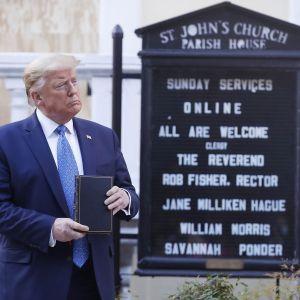
There he stood, the most powerful person on the planet, fumbling with a Bible he had never seen before. The sign behind him announced that all were welcome to share in “Services Online.”
Since the COVID-19 pandemic became serious business in mid-March, few houses of worship have been open for business. In the early days of the health crisis the move to virtual worship was a bipartisan affair. No more. Most mainline congregations seem resigned to an indefinite extension of the new reality, but conservative churches, particularly the pastors of white evangelical megachurches, have become increasingly restive.
There are many valid explanations for this left-right divide. The rush to re-open churches was a fringe phenomenon until President Donald Trump politicized the issue by classifying churches as essential services. With conservative activists already decrying the shutdown of the economy, it was only a matter of time before conservative evangelicals joined the party.
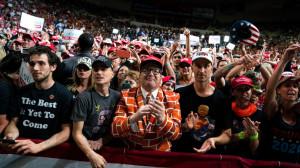 The crowd that greeted Trump in Tulsa received masks on the way in, but almost no one put them on. A few weeks later when Mike Pence spoke at a political rally/worship service at First Baptist Dallas, a proudly unmasked choir of 100 belted out the patriotic hits. Religion is politics, politics is religion, and everybody’s eager to get back to business.
The crowd that greeted Trump in Tulsa received masks on the way in, but almost no one put them on. A few weeks later when Mike Pence spoke at a political rally/worship service at First Baptist Dallas, a proudly unmasked choir of 100 belted out the patriotic hits. Religion is politics, politics is religion, and everybody’s eager to get back to business.
But there is more than partisan politics going on here. Conservative white evangelicals, especially those who attend megachurches (congregations with at least 2,000 sustained members in attendance on an average weekend) have become psychologically dependent on public worship in ways that most moderate-to-liberal Christians wouldn’t understand.
My focus is on white American megachurches, an admittedly diverse constellation of congregations. While there will always be a handful of white megachurches that stand out as exceptions, the pastors rushing to reopen their churches have much in common. Most are highly charismatic, entrepreneurial figures who grew their own congregations from a few dozen members to megachurch status in a few short years.
While some American megachurches are affiliated with a denomination (10% are Southern Baptist), most are proudly non-denominational, and many are large enough to function as mini-denominations in their own right. Their church plants are almost always located at the intersection of major highways (for easy access and visibility) and many of the accoutrements of traditional or mainline Protestant worship (hymns, hymnbooks, choirs, formal liturgy) have been eliminated.
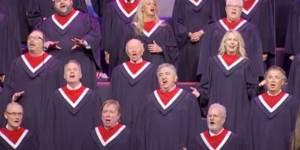 Proudly unmasked choir at First Baptist, Dallas
Proudly unmasked choir at First Baptist, DallasI am focusing on white megachurches for a couple of reasons. Most non-white megachurches tend to be neo-Pentecostal in theology and theologically and culturally conservative, but they don’t resonate with culture war rhetoric, they haven’t lined up behind President Trump, their communities have been disproportionately impacted by the pandemic and they aren’t passionate about reopening their churches.
Of course, corporate worship is valued by all Christians. Ironically, liberal congregations like Saint John’s Episcopal – the folks who celebrate diversity, long for “the beloved community” and profess compassion for “the least of these” – are either in no rush to return to corporate worship or are making plans to worship in facemasks with plenty of social distancing and no singing.
The folks who have been clamoring for an immediate return to in-house worship are the conservative white evangelicals. This sudden passion for community might seem counterintuitive for a group that celebrates entrepreneurial zeal and reduces “salvation” to a personal transaction, while showing disdain for public welfare programs and “socialized medicine.”
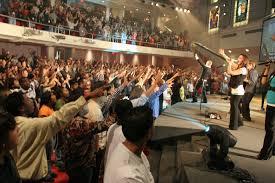 Conservative evangelicals, particularly those attending one of America’s 1,642 megachurches, work hard to create an atmosphere where, swaying gently, shoulder-to-shoulder, hands raised to heaven, “hearts in one accord,” the worshipping community feels the presence of the Holy Spirit and knows itself to be the true people of God.
Conservative evangelicals, particularly those attending one of America’s 1,642 megachurches, work hard to create an atmosphere where, swaying gently, shoulder-to-shoulder, hands raised to heaven, “hearts in one accord,” the worshipping community feels the presence of the Holy Spirit and knows itself to be the true people of God.
The music used in most white megachurches intentionally resembles contemporary pop tunes with the passion redirected from a sexualized lover to Jesus the Christ. The preaching meets a largely middle-class audience where it is, trading in self-help advice for husbands and wives, mothers and fathers, and the Christian family while cataloging the seven keys to building a Godly career or overcoming regret.
But these helpful hints for successful living are presented under the rubric of a “Christian worldview,” an interlocking web of supply-side economics, escapist eschatology, conservative politics and Christian nationalism, the idea that America is a nation uniquely chosen by God. According to most megachurch pastors, all of this will be confirmed when the trumpet sounds and Jesus returns to set things right. In the meantime, collective effervescence holds this complex package of ideas together.
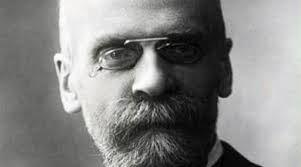 Emile Durkheim
Emile Durkheim“Collective effervescence” was first described in detail by Emile Durkheim in his 1912 study The Elementary Forms of Religious Life. By carefully observing the religious practices of Aboriginal tribes, Durkheim observed a powerful kind of social excitement moving through the group:
“When they are once come together, a sort of electricity is formed by their collecting which quickly transports them to an extraordinary degree of exaltation. Every sentiment expressed finds a place without resistance in all the minds, which are very open to outside impressions; each echoes the others and is re-echoed by the others. The initial impulse thus proceeds, growing as it goes, as an avalanche grows in its advance.”
As the excitement built, worshippers were gradually transported into a transcendent realm:
The vital energies become hyper-excited, the passions more intense, the sensations more powerful; there are indeed some that are produced only at this moment. Man does not recognize himself; he feels somehow transformed and in consequence transforms his surroundings.
This profound collective experience is far more likely to take root when likeminded people are standing shoulder-to-shoulder in cramped quarters. The physical proximity enhances the sense of shared identity, of who is with us (the people in this space) and who is against us (the godless liberals who refuse to get with God’s program).
 Collective effervescence works like a drug, Durkheim postulated, producing a form of dependency that leaves devotees craving more. It is also an acquired skill that can be enhanced through singing, chanting and moving in unison for prolonged periods. Because collective effervescence builds slowly, it must be carefully orchestrated by experienced practitioners who understand the process.
Collective effervescence works like a drug, Durkheim postulated, producing a form of dependency that leaves devotees craving more. It is also an acquired skill that can be enhanced through singing, chanting and moving in unison for prolonged periods. Because collective effervescence builds slowly, it must be carefully orchestrated by experienced practitioners who understand the process.
Durkheim noted that participants in this kind of worship focus on totems, tribal symbols that embody shared values and commitments. These totemic symbols bind worshippers to their tribe and its God. Trump was using the Bible as a totem when he held it aloft in front of Saint John’s Church without reading from it or alluding to its message.
The Holy Book is used in much the same way in most megachurches. The “Christian worldview” is alternatively called the “biblical worldview,” which implies that the Bible speaks, clearly and without contradiction, to all the important questions of the day. Almost all megachurches teach, or at least imply, that the Bible is the inerrant, infallible Word of God, but it is only mentioned in worship when biblical phrases, shorn of context, appear to align with the preacher’s message.
The theology reflected in megachurch music, and in most megachurch sermons, is notoriously vague. You can’t hold the attention of the audience if you get too deep into the weeds, and sermons containing too much social commentary run the risk of sowing division, especially in churches that are racially and demographically diverse. But a profound encounter with collective effervescence allows the complex theological, eschatological and ideological details of the Christian worldview to make sense and hang together. The presence of God in the room adds the divine imprimatur to the proceedings.
“Religion is still the product of a certain delusion,” Durkheim declared. But “by what other name can one call the state in which men find themselves when, as a result of collective effervescence, they believe they have been swept into a world entirely different than the one before their eyes?”
I am certainly not suggesting that collective effervescence is the unique property of conservative white megachurches. The phenomenon is on full display in football stadiums and rock concerts. Wherever likeminded people gather to do their thing (whatever that thing may be) collective effervescence is waiting in the wings. “Deadheads,” devotees of the Grateful Dead who follow the group from venue to venue, speak of their shared experience in exalted, even transcendent terms.
While it is unlikely that America’s Tweeter in Chief has ever experienced collective effervescence himself, his most ardent followers clearly do. Which is why Trump has dearly missed his “rallies” during the shutdown and now insists that the Republican national convention be held in a stadium with no social distancing protocols in place. When Governor Roy Cooper couldn’t promise that North Carolina could safely provide that kind of venue in August, Trump threatened to move the event to a state that wasn’t “in shelter-in-place mode.”
A half-empty stadium with masked Republicans spaced six feet apart would be the death of collective effervescence. Trump needs his people arrayed in front of him so he can quickly ascertain how his sound bites are working. If late-night comedians are struggling to land jokes without an in-person audience, imagine the plight of the president and the megachurch pastor.
Trump’s decision to wave a Bible in front of a church was driven by sinking support among his most dedicated constituency. In early March, the very time that worship went virtual in most of America’s churches, the president had the solid support of almost 80% of evangelicals. By early June, only 62% of evangelicals felt he was doing a good job.
Trump is losing control of the narrative, and his inability to orchestrate collective effervescence is a big part of his problem.
Megachurches are experiencing much the same problem. The men and women flocking to these services are typical Americans who listen to a dynamic sermon on Sunday morning and tune in to popular shows like “Game of Thrones” a few hours later. The faithful are surrounded by secular media created to push products and maximize audience share. Collective effervescence doesn’t just make people feel good; it generates a powerful sense of shared identity. And that is what is being lost.
The leadership of Saint John’s was horrified by the president’s willingness to use the Bible and their beloved church building as props for a photo op. Trump didn’t care. These people aren’t part of this base. He was sending a crude dog-whistle signal to his evangelical base and the megachurch pastors who exert a stranglehold on the white evangelical ethos. Trump’s Evangelical Advisory Board is exclusively comprised of megachurch pastors and TV preachers; everyone else in the religious community is dead to him.
Ever since American white evangelicals backed the wrong horse in the fight for racial integration their role as moral arbiters for the nation has been eroding, and in the past decade the slow crumbling has reached avalanche proportions. America’s white evangelicals are commonly subjected to derision by late-night comedians and have little traction among white Millennials. And if this country’s megachurches can’t connect with Millennials their shelf-life is extremely limited.
Megachurches were created by and for the Baby Boomer generation, a cohort that was comfortable with Christian nationalism, an inerrant Bible and the casual denunciation of feminists and the LGBTQ community. The vast majority of Millennials have rejected this moral ethos.
Megachurches spoke for a generation that is gradually losing its grip on the machinery of cultural and political power. (I haven’t mentioned the fact that megachurches, with their enormous physical plants and hundreds of employees, require millions of dollars in tithes and offerings every single week to remain in operation.)
And what happens in suburban Dallas if one megachurch reopens with no holds barred while the big-box religious plant down the road is mired in “shelter-in-place mode”? How could you prevent a large swath of the faithful from following the action?
Small wonder then, that while most American congregations are willing to soldier on with Zoom and YouTube, a growing number of megachurch preachers are clamoring for an immediate return to public worship.
That said, these preachers understand that the threat of the COVID-19 pandemic is real. A precipitous rush back to shoulder-to-shoulder worship could drive a spike in infections and a world of painful blowback. Sure, the president and most Red State governors are flashing the green light, but that doesn’t mean the faithful will march back into megachurch sanctuaries in lockstep.
What happens if half the congregation is stuck in shelter-in-place mode while the other half is ready to party like the world hasn’t changed? You either axe half your worship services or live with half-empty buildings.\
Can the kind of collective effervescence megachurches are so good at generating break forth in the midst of a masked congregation awash in hand sanitizer and seated six-feet apart? I don’t think so. Especially if congregational singing is significantly curtailed.
Can Donald Trump rally the faithful under similar conditions?
Don’t be surprised if both the Republican Party and the white evangelical megachurches of America are back to normal by mid-summer.
Perhaps all will be well. But if the rush to re-open sends the death rate spiraling upward, the white megachurch model may never recover.
